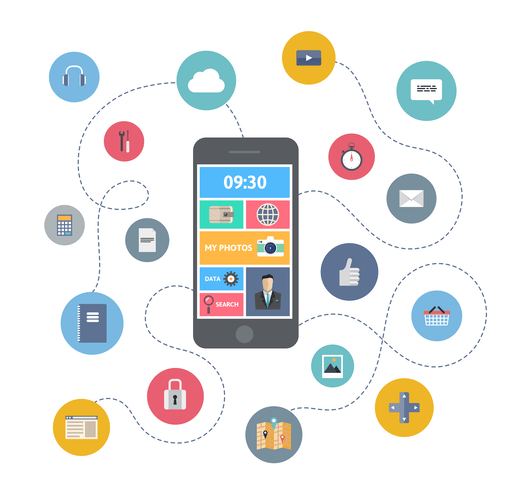An output artifact does not need to be completely defined to serve as input of object-oriented design; analysis and design may occur in parallel. In practice the results of one activity can feed the other in an iterative process. Process checks include review of timelines and expenses, as well as user acceptance. The Agile SDLC model separates the product into cycles and delivers a working product very quickly.

All the code flaws missed during the development are detected here. QA specialists document them and pass them back to the developers for fixing. The testing process repeats until all the critical issues are removed, and the software workflow is stable.
Phases of the Software Development Life Cycle
Each software development life cycle model starts with the analysis, in which the stakeholders of the process discuss the requirements for the final product. The goal of this stage is the detailed definition of the system requirements. Besides, it is necessary to ensure that all the process participants clearly understand the tasks and how specialists will implement every requirement.
After the initial program version release, the tech support team joins. If you want to get more information about the main stages of custom software development, read this article. After successful testing and obtaining the necessary approvals, the software advances to the deployment phase, where it becomes accessible to users.
Operations and maintenance
People have already developed frameworks for efficient project management called software development methodologies. In the article, we’ll look at the most common ones, see what steps they include, and discuss how to choose the most suitable option according to the requirements. Because this phase includes coding, it is the most important phase of the SDLC for the developer team. Moreover, this is the longest phase of the entire software development lifecycle.

The evaluation is done before the project proceeds to the next planned spiral cycle. This phase is meant to identify any potential risk by planning the risk mitigation strategy. The project manager, team members, and end user collaborate to identify potential risks that may impact the project. Software testers draft test plans based on the functional specification documented in the low-level design document (LLDD). On the other hand, software developers prepare testing plans in the form of a checklist to examine if every function is executable as expected. During this stage of the system lifecycle, subsystems that perform the desired system functions are designed and specified in compliance with the system specification.
Efficient Testing
They will look at how to best integrate the new software into any existing IT infrastructure the organization may have. Agile is an iterative approach that emphasizes collaboration and adaptability, breaking projects into smaller sprints for incremental development and frequent customer feedback. This phase may also involve marketing the new product or feature so people know about its existence and adding release notes. This phase involves determining the project scope, goals, and requirements together as a team. Planning also includes creating a timeline, allocating resources, and outlining potential risks to the project’s success. The product manager/end user in this phase is responsible for evaluating the system software, which is the output of the previous phases.
- At the end of the sprint, the team delivers the developed part of the product, and then it’s time for the retrospective – sprint review and analysis.
- They can also engage customers and stakeholders to obtain feedback throughout the project lifecycle.
- These features allow key project stakeholders to see which areas of the project are on track and which areas need improvement.
- Starting software development with the Waterfall or V-shaped model when the budget is relatively low is questionable.
- For example, we used Waterfall for building CHOO, a member management system for Norwegian associations.
It is focused on delivering the software to the end-user or installing it onto the customer’s system(s). This stage includes the designing of requirements specified in the very first phase of the SDLC. In addition to assisting in specifying hardware and system requirements, that stage also helps define the overall software architecture. After the development of the product, testing of the software is necessary to ensure its smooth execution. Therefore, at this stage, all the probable flaws are tracked, fixed, and retested.
What is the software development lifecycle (SDLC)? Phases and models
The waterfall model provides discipline to project management and gives a tangible output at the end of each phase. However, there is little room for change once a phase is considered complete, as changes can affect the software’s delivery time, cost, and quality. Therefore, the model is most suitable for small software development projects, where tasks are easy to arrange and manage and requirements can be pre-defined accurately.
The software development lifecycle (SDLC) is the cost-effective and time-efficient process that development teams use to design and build high-quality software. The goal of SDLC is to minimize project risks through forward planning so that software meets customer expectations during production and beyond. This methodology outlines a series of steps that divide the software development process into tasks you can assign, complete, and measure.
Insights about the development life cycle models from the MindK team
And the ScrumMaster is tasked with keeping the team focused on its goal. The agile model is a rapid development model, where the software is developed in short sprints and feedback from users and stakeholders is incorporated throughout the process. This can be attributed to a variety of factors, including poor planning. There are also alternatives to the types of SDLC methodologies detailed further below. RAD offers implementation of CASE tools, joint application development, and prototyping.

And by the end of the building process, clients will have an operating feature to share with the customers. At the same time, the Waterfall methodology is a linear and documentation-laden project management process with terminal phases. It means that each stage must be finalized before the next phase can start and there is no overlapping in the phases.
Team Experience
To make that happen, you collect a list of improvements and new features that will make the product valuable to a wider audience. We’ve already explained how to take the maximum value out of MVP in our previous article on how to do the MVP right. When the trial version what is systems development life cycle is ready, you test it in the narrow circle of colleagues, partners, or those whose opinions you can trust. Let’s say the first version has met your expectations, it is really convenient to plan things for the week and users began to work more efficiently.
5 Ways LLMs Can Empower Software Engineering – Techopedia
5 Ways LLMs Can Empower Software Engineering.
Posted: Mon, 03 Jul 2023 07:00:00 GMT [source]